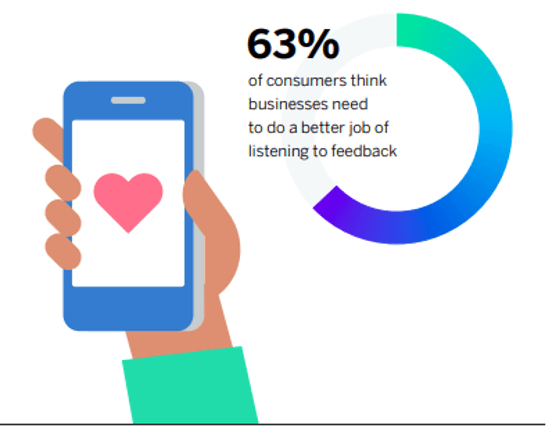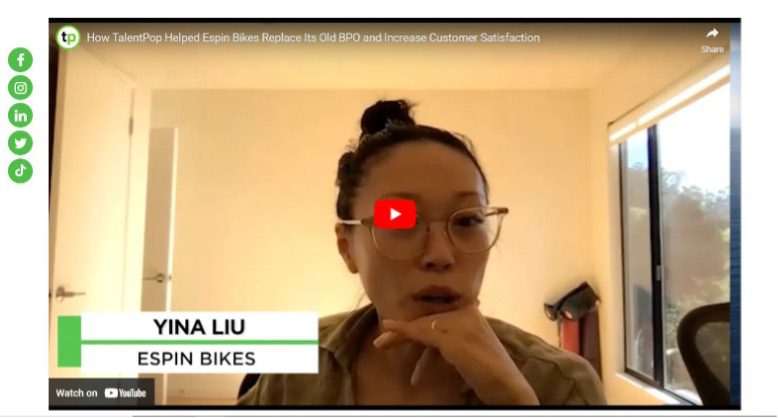Customer service is one of those business functions which is demonstrably crucial to success and yet, is incredibly neglected.
Consider that customers who’ve had a positive experience are likely to spend 140% more on your brand than those with a negative experience. But when you ask average Americans how they feel about the state of customer service, eight out of 10 will tell you it’s not up to the mark. In fact, U.S. companies lose a whopping $62 billion every year due to sub-par customer service.
Ecommerce competition is now more fierce than ever, and poor service is not so much a drag on your growth, as it is an existential problem for your company.
Investing in customer service initiatives can help you increase ecommerce revenue and multiply customer lifetime value. Here’s how.
Table of Contents
Why Customer Service Is Integral to Ecommerce Success
Customer service advocates often face an uphill battle when trying to persuade their companies to bankroll their initiatives. The belief is that ROI on customer experience is more difficult to gauge than that of other investments.
However, a cursory look into ecommerce trends proves that ignoring CS can be fundamentally detrimental to growth. It’s also a mistake that can haunt you for a long time.

Source: Qualtrics
For one thing, ecommerce shopping is a very solitary experience. Unlike with brick-and-mortar shops, where you can interact with store assistants, ask questions and receive instant answers, in ecommerce, customer service is often the customer’s only point of contact.
Also, consider that there are up to 24 million ecommerce websites out there with more popping up every day. Ecommerce rivalry is heating up and there’s a limit to how much you can compete on price and innovation. This means that you have to find new competitive advantages to increase ecommerce revenue. Customer service can be that differentiator.
Customers have even come to expect it. 93% of people tend to make repeat purchases with a brand that provides excellent customer service. And 80% of them will switch to a competitor after a bad experience.
What’s more, if they do have a bad experience, they’re much less likely to keep quiet about it. The number of people who will take to pestering or publicly shaming a brand has tripled to 9% from 3% in 2020.
If nothing else, consider this: a customer experience promoter offers your ecommerce business a customer lifetime value that’s 600-1,400% greater than a detractor.
How to Deliver Top-Notch Customer Service in Ecommerce
Customer service starts at the top. The company leaders have to buy into a culture of total customer satisfaction and build downstream processes accordingly. When the entire business is aligned towards improving this metric, it reflects across every touchpoint, including the user experience on your website, purchase journey, order delivery, customer support, post-purchase engagement, and so on.
Here’s how you can improve customer service in your ecommerce business:
Understand Your Customers
The first step to satisfying your customers is listening to them. Talk to your prospects to learn where the bottlenecks are in the buyer journey, what are their grievances, and how you can create more value for them.
Customer surveys and interviews are both excellent ways to do this. Just the act of asking after their experience shows that you care and can build goodwill.
Surveys help your customers maintain a degree of anonymity and they can complete these in their own time. They may also feel more comfortable answering truthfully on an online survey. However, they’re also likely to be less engaged when doing this remotely, so it’s a good idea to keep the survey brief.
Interviews, on the other hand, require face-to-face interaction. They’re not often used for customer service in ecommerce, but when you can arrange them, they tend to yield deeper, more emotional insights about your brand.
Personalize the Experience
Shoppers have steadily developed an innate aversion to cookie-cutter, mass-market experiences. If your brand simply blends in with your competitors, customers won’t see a benefit to shopping with you. In a recent report, 71% of respondents indicated that they were frustrated by impersonal experiences.
You can counter this with personalization across the customer value chain. Your customers’ purchase behavior, habits, preferences, and past interactions should all inform how you connect with them today. For example, if your customer has shown a preference for a particular language, you should automatically facilitate all future support interactions in that language. And you don’t have to stop at chat support either; strive to personalize customer service across your ecommerce website.
Headless architectures let you personalize content, product recommendations, calls-to-action, and checkout options. This optimizes CX on your site, helping increase ecommerce revenue. It can also boost loyalty and repeat purchases, improving ecommerce customer lifetime value.
Offer Omnichannel Customer Service
Omnichannel service means allowing your customers to seamlessly interact with your brand across communication channels, including live chat, phone, email, text messaging, and social media.
Crucially, omnichannel isn’t the same as multichannel. You’re not just creating additional touchpoints for the customer, rather syncing communication across each channel so that all ecommerce customer service interactions are documented.
87% of customers say they find it frustrating when they’re asked to repeat information across multiple channels and will even reconsider shopping with your brand as a result. An omnichannel experience solves this problem by starting an interaction where the last one left off.
For instance, if you’re speaking to a customer support representative in response to an email complaint for a faulty product, you should be able to demonstrate the product glitch on live chat or video call rather than having to switch back to email in the middle of the call to send video files.
Be Proactive
Being proactive is a big part of providing quality customer service in ecommerce. Instead of waiting for customers to reach out about something, try anticipating their needs, such as with automated reminders to top up a purchase or renew a subscription.
Use this approach when you’re implementing site functionality to enable self-service for your customers. This happens to be one of the most underused tactics in customer service. Over 60% of Americans prefer automated self-service to contacting customer support.
This is ideal for situations like returns, exchanges, and cancellations. Empowering your customers to solve their own problems can improve resolution time and satisfaction for them, while helping your ecommerce customer service teams focus on more critical issues.
Measure, Optimize, Rinse and Repeat
Finally, make sure you thoroughly process and utilize your learnings to improve service. Use collected data to understand which channels are most popular, track your busiest hours, engage with your fastest-growing markets, and keep abreast with emerging trends.
Circulate your findings across all your customer teams, including product, sales, marketing, and CX. Use them to refine product development, customer outreach, and ecommerce service. Boost customer lifetime value with more engaged shoppers who have a genuine connection with your brand.
Case in Point: TalentPop
TalentPop is a customer service provider based out of Costa Mesa, California and a Coalition partner. They excel at providing on-demand, omnichannel customer service options for ecommerce companies. Their success at helping retail businesses boost customer satisfaction and operational efficiency makes them an ideal case study.
Key to TalentPop’s value proposition is a large pool of vetted customer service agents who are demonstrably qualified and experienced in your space. Each agent goes through a rigorous screening and training process, designed to offer you the best possible resources for ecommerce customer service.
Their clients clearly appreciate this level of commitment. As Espin Bikes notes, “At some points, it’s actually felt like we’re a customer service company who just happens to sell bikes – TalentPop has truly gone above and beyond to help us get organized and become a better company.”

TalentPop enjoys a 98% agent success rate and offers a rapid two-week onboarding plan for its clients. They also enable you to expand support across multiple channels with a seamless experience throughout. They helped JAXXON, a luxury jewelry brand, do exactly that. “One of the things I really love about TalentPop is their attentiveness and willingness to help throughout the whole process…We don’t want to work with anyone else except TalentPop.”
TalentPop’s services are priced fairly attractively when compared to the cost of traditional BPO agencies or in-house talent. They also offer a 30-day money-back guarantee for all agent hires.
Lead Gen Business? Customer Service Can Help You Too
The value of customer service isn’t limited to ecommerce. It can help lead gen businesses as well. Whether you’re a B2B company or a B2C with a longer sales cycle, customer service is imperative for you — perhaps even more so than with an ecommerce brand.
For one thing, your customers are more expensive to acquire.

Source: ayeT-Studios
As the graph above shows, the cost of acquisition for one customer can go up to nearly $400, depending on the industry. This means that once you’ve convinced someone to buy into your company, you can’t afford to lose them.
The good news is that your customers aren’t likely to change brands at the drop of a hat, unlike with ecommerce. This gives you a chance to increase revenue and customer lifetime value by maximizing customer satisfaction.
As a lead gen business, you can improve customer service by implementing all of the measures an ecommerce company would, especially when it comes to understanding your customers and personalizing the experience for them. You can build on this by undertaking actions specific to your business model:
Identify Buyer Personas
The challenge with B2B and lead gen, in general, is that the product user isn’t always the buyer. Purchase decisions are often made by procurement managers or department leads. In this case, your customer experience has to be optimized for both personas and specific to the stage you’re at in the sales cycle.
If you’re pursuing a product-led strategy, for example, the end users will typically come across your product first and if they’re happy with it, they’ll bring it to the team lead’s notice.
Invest in Customer Education
Customer education tends to be one of the most underrated aspects of customer service, even in ecommerce. It can help manage customer expectations, leading to better satisfaction outcomes post-purchase.
With lead gen businesses, especially in spaces like software and technology, education is key to increasing interest and product trials. Your customer service agents should be trained to answer more technical questions that users are likely to have. They should be able to direct your prospects to avenues for further learning and take measures to move the lead further along the sales pipeline.
Offer Post-Purchase Support
While post-purchase support is an important part of customer service in ecommerce, it’s fundamental to improving customer retention and customer lifetime value for lead gen companies.
With B2B enterprises, product purchase is just the start of the customer experience journey. Your customers will want a reliable partner they can turn to for repeat purchases, upgrades, add-ons, technical support, and more. Quality service means ensuring that your customers are happy and willing to recommend you to other buyers.
Accelerate Ecommerce Growth With Coalition
Rapid growth can often provide the resources necessary to invest in customer service initiatives for ecommerce. Partner with a leading ecommerce agency like Coalition Technologies to take your online store to the next level. We’ve generated over half a billion dollars in revenue for hundreds of clients worldwide.
You can check out our work or browse some of our customer testimonials. Schedule a personalized consultation with us to see how we can increase ecommerce revenue and boost customer lifetime value for your brand.


